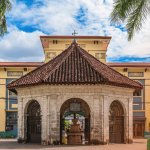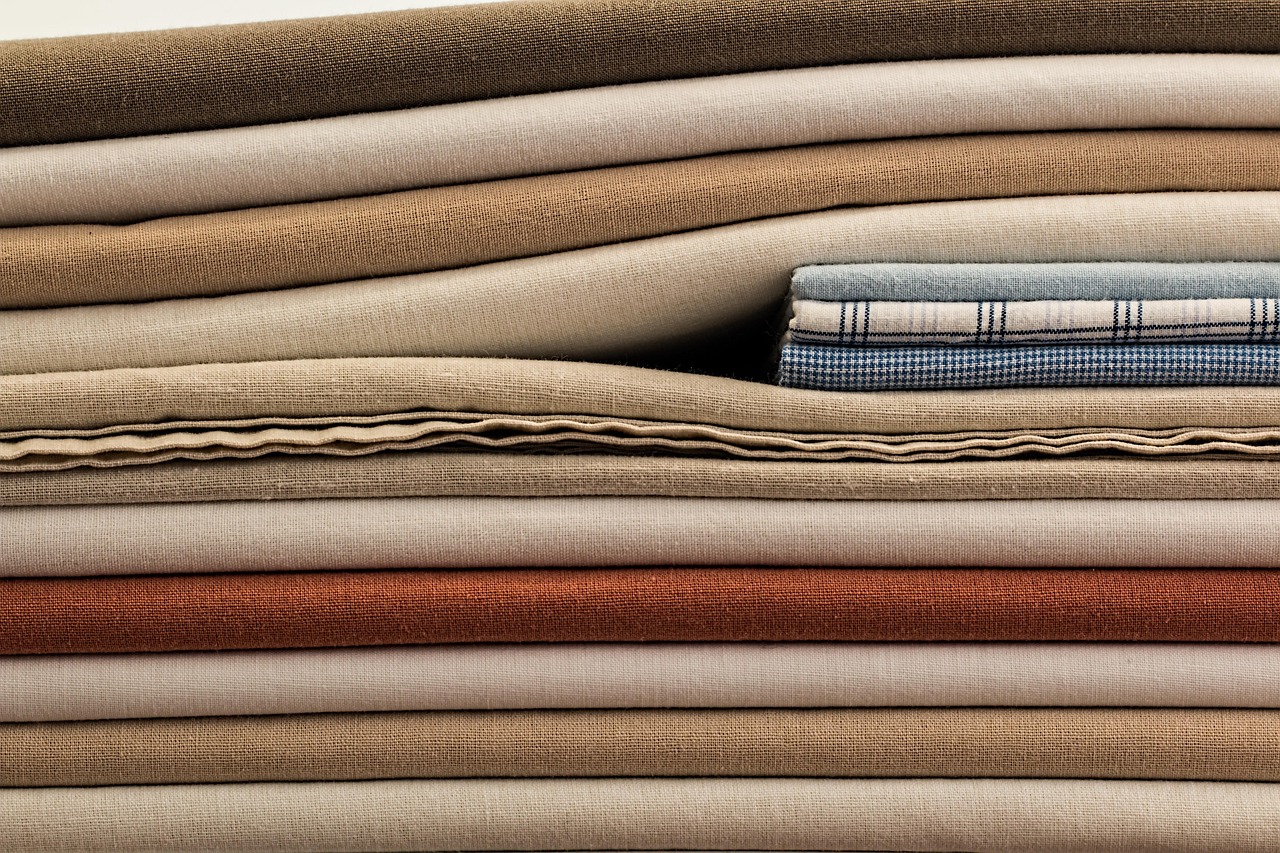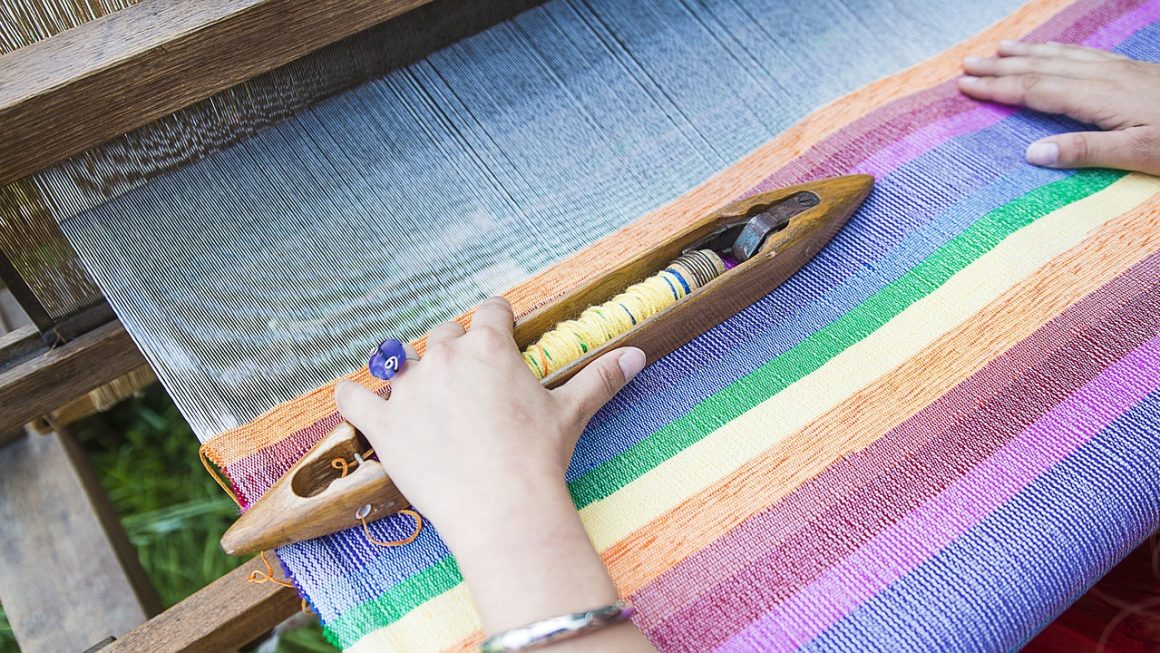Upgrading my travel wardrobe with Philippine textiles and fabrics. Because mindful living > mindless shopping. Get inspired.
I’m no Carrie Bradshaw. My idea of a fashion emergency is realizing all my socks have holes. But after a few years tucked away in my Cebu apartment, surrounded by unread books and half-finished Netflix series, I’ve had an epiphany. It wasn’t some spiritual awakening amidst the banana trees; it was a deep dive into the dark side of my closet – that black hole of fast fashion where forgotten t-shirts and impulse-buy dresses go to die.
Turns out, my wardrobe is a crime scene. Cheap fabrics, unethical production, a devastating environmental impact… Suddenly, my cozy introverted existence felt a whole lot less comfortable. You might think, as a digital nomad in the Philippines, I’m worlds away from the sweatshops and polluted rivers that fuel the fashion industry, right? Wrong.
The truth is, what we wear matters. Our choices ripple outwards, impacting communities here in the Philippines and the health of the planet. And that’s where Philippine textiles and fabrics come in. They’re not just beautiful – they’re a lifeline to a different way of making and consuming clothing. Think intricate weaves, natural fibers, and a history that makes those $5 tees look painfully shallow. This isn’t just about ditching cotton (although we’ll get to why that’s a good idea too). It’s about discovering fabrics with stories as rich as your morning coffee, and a style that’s as mindful as your travel itinerary.
So, if you’re ready to trade your worn-out leggings for something more meaningful, to travel with a lighter footprint, and maybe even feel a little more fabulous in the process, stick around. As someone who seriously considered wearing the same muumuu for a week straight, I’m here to tell you that sustainable style is possible.
The Problem with Cotton
Despite my love affair with linen and Philippine textiles, I haven’t fully banished cotton from my life. My closet still harbors a few relics from my H&M-loving days. See, even the most mindful digital nomad can stumble. But before you judge, let’s unpack the whole tangled mess that is cotton. It’s not just about trendy tote bags; there’s a dark underbelly to that soft white boll.
What’s the Environmental Cost of Cotton?
Turns out, my comfy t-shirt is a thirsty, thirsty beast. Growing conventional cotton is like throwing a water-guzzling party for your clothes. Did you know something like 2,700 liters of water go into producing a single t-shirt? That’s enough to keep a person hydrated for two and a half years. Kinda puts your morning coffee habit in perspective, huh? Cotton fields are also notorious pesticide guzzlers. It’s a vicious cycle – the more pesticides you use, the more you damage the soil, the more water you need.
Why Cotton Production is a Major Water Polluter
Remember that time an entire sea dried up? Yep, I’m talking about the Aral Sea disaster – largely blamed on water diversion for cotton irrigation. Ecosystems have been devastated, all in the name of cheap denim.
Then there’s the pesticide problem. Remember Rachel Carson’s “Silent Spring”? The gist is: chemicals bad. Cotton fields get doused in ’em. Those toxins seep into the soil, the waterways, and eventually, into the whole darn ecosystem. Reminds me of that scene in The Matrix when Agent Smith talks about humans being a virus… not wrong when it comes to our impact on the planet.
What’s more? Sometimes farmers would pull out cotton plants to get rid of any eggs or spores from the field. When soil is exposed to the air, it loses nutrients. So fertilizers are added to the soil. Nitrogen is the most common ingredient in synthetic fertilizer. The problem is that nitrogen fertilizers are a major contributor to greenhouse gas emissions.
How Ethical is Your Cotton T-Shirt? Labor Practices in the Cotton Industry
Shopping sustainably is a head-scratcher sometimes. You find a “Made in Bangladesh” tag and your conscience starts whispering about forced labor, poverty wages, and sweatshop conditions. It’s the fashion world’s dirty little secret. And guess who’s paying the ultimate price? Workers trapped in a system designed to keep those t-shirts dirt cheap.
Remember when everyone got up in arms about sweatshops? Turns out, the cotton industry in Southeast Asia has its share of shady labor practices. We’re talking long hours, low wages, and maybe even child labor in some places. Suddenly, that five-dollar tee seems less of a bargain and more like a complicity badge. Yikes.
Philippine Textile Traditions: A Sustainable Legacy
When I first arrived in Cebu, my idea of “local textiles” meant brightly-colored souvenir tees and cheap sarongs from beachside stalls. I was all about that easy, breezy, digital nomad uniform. But then, like any good introvert forced to leave her apartment, I stumbled into a rabbit hole – a world of fabrics, colors, and stories I never knew existed.
Who are the Indigenous Weavers of the Philippines?
Forget what you think you know about weavers as little old ladies hunched over looms. The textile traditions here are passed down through vibrant communities across the islands. We’re talking the T’Boli women of Lake Sebu, the Mangyans of Mindoro, the skilled artisans of Ilocos… these are cultures where weaving isn’t a hobby, it’s an integral part of their identity and their connection to the land.
What are the Unique Qualities of Traditional Filipino Fabrics?
Okay, here’s where the geek in me gets excited. Piña fiber, scraped from pineapple leaves? Abaca, strong enough for ships’ ropes but also woven into delicate fabrics? It’s the science of taking what nature provides and transforming it through sheer skill.
The colors are often from natural dyes, with rich browns, deep blues, and vibrant reds that speak of earth and sky. Forget the idea of pristine perfection. Traditional textiles often have minor irregularities that betray the human hand, the slight slubs and variations that make mass-produced fabrics look soulless in comparison.
Why Filipino Textiles Embody Mindful, Slow Fashion Principles
In a world drowning in fast fashion waste, these weavers are the antithesis. They work with natural fibers, often locally sourced. Their dyes come from plants and minerals. The process might be slow, but it’s incredibly low-impact. Plus, buying traditional textiles supports whole communities, not faceless corporations.
My journey into the world of Philippine textiles is just beginning. But like Jane Goodall discovering gorillas, or maybe more like Carrie Bradshaw stumbling into a Manolo Blahnik sale, I’m hooked. It’s not just about the fabric; it’s about the connection, the history, the guilt-free satisfaction of knowing my wardrobe choices matter…even for an anti-fashionista like me.
Weaving is an ancient craft in the Philippines—learn more about local weaving patterns.
Where to Buy Sustainable Philippine Textiles and Fabrics
Finding clothes that fit both my values and my suitcase is harder than getting a decent WiFi signal in some of these tropical hideaways. I’m not about to turn into a hemp-wearing, patchouli-soaked cliche, but neither can I live with the guilt of fueling the fashion industry’s eco-sins. So, my fellow nomads, let’s get real about how to hunt for sustainable style in the Philippines – and pull it off without looking like an off-duty archaeologist.
What to Look For: Labels Aren’t Perfect, But Here’s How to Spot Real vs. Greenwashing
It’s a jungle out there, sisters. Not every “eco-friendly” label is legit. Like a bad date, some are just greenwashing to get your attention. First, ditch the idea of perfect. Aim for better, not flawless. Look for natural fibers like piña or abaca – bonus points if they’re handwoven and naturally dyed. Check for transparency – does the brand share where their fabrics come from? How about the makers’ stories? If they’re vague, that’s a red flag.
Where to Find the Good Stuff: Markets, Boutiques, and Online Shops with a Conscience
Forget the generic mall chains; we’re talking about concept stores. Think of those teeming with color, not tourists.
Top of my list is ANTHILL Fabric Gallery, established way back in 2010 (which makes me feel old, but that’s a separate issue). They get bonus points for their name: Alternative Nest and Trading/Training Hub for Indigenous/Ingenious Little Livelihood seekers. It’s got a clunky charm that appeals to my word-nerd side. Expect loads of handwoven, hand-loomed fabrics that give your closet some serious soul. And yes, they have printed fabrics too, if you crave a dash of pattern.
Beyond that, Cebu’s got these cottage industries in places like Argao. They churn out gems like kinarnero (a wool-like fabric that sounds way cooler than it probably looks on me). Catch their wares at events like Gabii sa Kabilin or old-school heritage places like Casa Gorordo Museum – perfect for channeling that faded colonial elegance.
Outside Cebu, local textiles and fabrics can be sourced from the following manufacturers and brands:
- La Hermina Piña Weaving Industry
- Reycon’s Piña Cloth and Industry
- Malabon Piña Producers and Weavers Association
- Rurungan sa Tubod Foundation
- Creative Definitions
- Filip+Inna
- Casa Mercedes
- Manila Collectible
- Gifts & Graces Foundation
- Yakang Yaka
- Interweave
- Good Luck
- Humans
There isn’t one single fabric that can sustainably meet the needs of over 7 billion people. But we can change our consumer habits to help the environment.
FAQs
Maybe. But trends I can get behind don’t end up in landfills, unlike my 2005 skinny jeans.
One less t-shirt won’t save the planet. But small choices add up, and feeling good about those matters.
Wear with respect, not like a costume. Appreciation beats imitation, especially for textiles with meaning.
More than fast fashion, less than designer duds. Think: investment in quality, not a Zara impulse buy.
Depends. Piña is delicate. Abaca can handle adventure. Read the tags like I should with skincare labels.
Parting Thoughts
I’m not going to trade my comfy leggings and ironic Star Wars t-shirts for a wardrobe full of handwoven wonders. A girl’s gotta maintain a baseline level of geek chic, after all. But even a reluctant fashionista like me can see the appeal of Philippine textiles and fabrics. They’re beautiful, and unique, and carry stories far more interesting than whatever I last binged on Netflix.
You don’t have to overhaul your entire wardrobe like I did during that minimalist phase inspired by Marie Kondo (which, let’s be real, sparked zero joy). A statement scarf, an abaca bag – even small shifts support Filipino weavers and reduce your impact. Plus, imagine sipping your third flat white of the day, knowing you look stylish and made a conscious choice.














